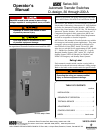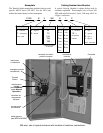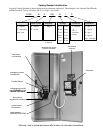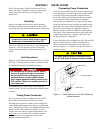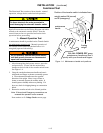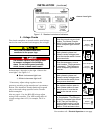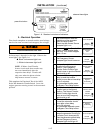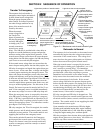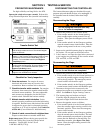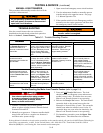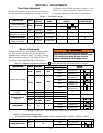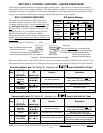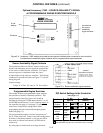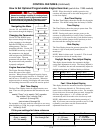
SECTION 1 INSTALLATION
1 --- 1
Series 300 Automatic Transfer Switches are factory
wired and tested. Installation requires skid removal
then securing the enclosure to the supporting
foundation.
Mounting
Refer to the a ppli cable enclosure out li ne drawing
furnished with this switch and mount the Series 300
according to details and instructions shown on diagram.
Protect the automatic transfer switch from
construction grit and metal chips to prevent
malfunction or shortened life of the ATS.
Mount the ASCO ATS vertically to a rigid supporting
structure. Level all mounting points by using flat
washers behind the holes to avoid distorti on of the
switch.
Line Connections
Refer to the Wiring Diagram provided with your Series
300 ATS. All wiring must be made in accordance with
the National Electrical Code and local codes.
De–energize the conductors before making
any line or auxiliary circuitry connections.
Be sure that Normal and Emergency line
connections are in proper phase rotation.
Place engine generator starting control in the
OFF position. Make sure engine generator is
not in operation.
It is unnecessary to remove pole covers from the
transfer switch. If you do remove them, reinstall them
carefully.
Testing Power Conductors
Do not connect the power conductors to the ASCO
Series 300 transfer switch until they are tested.
Installing power cables in conduit, cable troughs and
ceiling-suspended hangers often requires considerable
force. The pulling of cables can damage insulation and
stretch or break the conductor’s strands. For this
reason, after the cables are pulled into position, and
before
they are connected, they should be tested to
verify that they are not defective or have been
damaged during installation.
Connecting Power Conductors
After the power cables have been tested, connect them
to the appropriate terminal lugs on the transfer switch
as shown on the wiring diagram provided with this
Series 300. Make sure the lugs provided are suitable
for use with the cables being installed. Standard
terminal lugs are solderless screw type and will accept
thewiresizeslistedonthedrawingsprovidedwiththe
Series 300. Be careful when stripping insulation f rom
the cables; avoid nicking or ringing the conductor.
Remove surface oxides from cables by cleaning with a
wire brush. When aluminum cable is used, apply joint
compound to conductors. Tighten cable lugs to the
torque specified on rating label.
Three cable spacers are included with 150, 200, and 230
ampere transfer switches. When installing power
cables, run the cables through the cable spacers as
shown in Figure 1–1. Position cable spacers within 1½
inches from lugs.
The cable spacers must be located as shown
for 150, 200, and 230 ampere transfer switches.
cable spacer
cable spacers
1 ½ inch approximate
Figure 1–1. Cable spacers for 150, 200, & 230 amp.
transfer switches.



